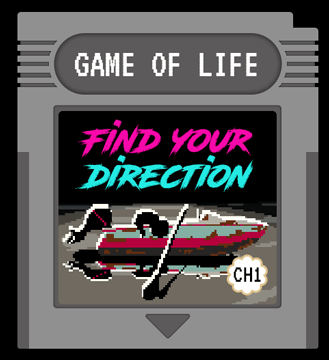Passive income is all about disconnecting your time and the money you earn. Of course, there is time involved in creating a passive income, but there is not direct link between time and earnings. In this article, you will learn the basic principles of passive income. You can use this knowledge to think of ways to create a passive income for yourself.
What is Passive Income?
Passive income is the opposite of active income. Active income is when you earn money in exchange for effort. You either get a salary, a per-hour paycheck, or work for commisions or tips. This includes the majority of full-time and part-time jobs.
However, with passive income, your effort and pay are not linked. So you cannot realistically calculate a wage per hour, because there is no direct link between time and earning.
Examples of Passive Income
Examples of passive income can be found in real estate, investing, content creation, online teaching, and even webcam models.
You could create a website or app that sells digital products all over the world. Of course, you need to spend time to get to your first sale, but after that there’s nearly no difference in selling 10 or 1,000 digital products.
It’s the dream come true. Make money while you sleep. Literally.
How to make money while you sleep
If you still think that passive income is some kind of fairytale fantasy, you need to wake up. Examples are all around us. I’m sure you’re already familiar with some good examples of passive income. Think of the pensioned couple who are subleasing their second apartment, the rich neighbors that live off yearly interest on their savings or that stock trader who has been bragging about his Tesla shares for more than a decade.
With some imagination, you could even see grants or governmental support as passive income. Think of a lazy, unemployed guy receiving financial aid, while he’s perfectly capable to do work. Zero effort, free money.
Well, he shouldn’t be your example. But you get the point.
Making a Passive Income online
The internet also created many more opportunities for passive income. It has made it easier for individuals to create their own revenue stream, without the need to be part of a bigger company. Think of someone who creates online courses, a songwriter who earns royalties whenever his song is played on Spotify or the YouTuber who earns money from advertising Skillskare in every f*cking video.
“If you don’t find a way to make money while you sleep, you will work until you die.”
~ Warren Buffett
The difference between Active and Passive Income
Now let us take a step back. Why do we work?
We work because we want to earn a living. You can enjoy your job, but in the end, you work for money.
Work smarter
When it comes to work, you can work harder or you can work smarter. Generally, it’s best to work smarter and not just harder. I think you would agree. Of course, we want to do both, but if there is an easier way to get the same result, then you should do it. Most people would want to work less and earn more. Working in a smarter way allows us to save time and potentially get greater results.
Now I know your initial thought is: “Sure, everyone wants to work less and earn more, but it is easier said than done.”
But it is actually possible with passive income.
Sky is the limit without a ladder
In school we get taught that if we want to get a good job later, we need to study hard and climb our way up the ladder. If you want to earn more, you need to make promotions or find a job that pays better. And yes, good education and working hard will make your pay higher. But with any job, or active income, there’s an upper limit. There’s only so many hours in a day. Sure, you can decide to work more or less, but no human should work more than 40 hours a week. And sure, some people are earning crazy salaries. But no matter if you earn 10 or 1000 dollars an hour, there’s still an upper limit.
There is no upper limit in most forms of passive income.
You can build a system that generates money without needing to put in daily work. Your earnings will accumulate.
Compound effect
This approach to earnings is not commonly taught in schools, but even traditional schools already gave you some hints. In your Economics class, you learned about calculating interest:
“If I would have 10k on my bank account and the bank gives me 5 percent every year, I would have 10,5k in year 2, and so on.”
Now, these schoolbook examples were from a time where it was actually profitable to put your money in bank. Putting your money in the bank would give you some passive income. Nowadays banks give us anywhere from zero to two percent of interest. That’s a meager income. And if you paid attention in class, you should be able to calculate that it will only take you 231 years to get to a million.
I think that’s too long.
Passive Income doesn’t mean Laziness
Passive income doesn’t mean that there’s no work involved. Instead, it means that the work is not long-term and does not require a continuous effort. Even if you decide to take one month off, you should be able to get some income.
When creating a passive income, the bulk of work is usually done upfront. Besides spending a few hours here and there to ensure that the revenue stream will continue running, there is no more work involved.
A Real-Life Example of Passive Income
Meet Joe.
He’s far from average when it comes to painting. In his job as a professor at a liberal arts university, he teaches students how to use Photoshop to create illustrations.
In terms of salary, he has nothing to complain about. He earns about $4,000 a month, for his 40 hour work week, resulting in a $25 hourly wage. He works from Mondays to Fridays and plans his time well, so he has the weekends off.
Last month his school was closed, so he had to give some online classes. It was a little awkward at first, but now it’s going quite well. And that gave him an idea: What if I would record some tutorials about the basics of Photoshop and sell them online? It could easily be a small course that he could sell for $40.
He decides to give it a try.
The camera rolls for ten hours and he spends ten hours editing the video and putting it online. Twenty hours of work without seeing a single dollar, this better be worth it.

A week goes by without a single sale.
He makes a few adjustments to the title and thumbnail of the course.
It paid off. On February 8, he finally gets his first sale!
The number of sales slowly increases throughout, and Joe sells to 80 customers. He spends a few hours here and there to fix some mistakes in his course, but overall, Joe feels like his course has been a great success!

The graph below shows the difference between Joe’s teaching at university (active income) and online teaching (passive income).
At his university job, he basically earned $1,000 each week. There is a direct connection between his hours spent in class and the money he earns. You can tell, because the line that represents his active income is almost linear.
In March, Joe will get another paycheck of $4,000. And in April, he will again earn $4,000.

His online course however, only started to sell from the second week onwards. The number of courses he’s selling is steadily increasing, but his earnings are far from constant. There is no direct relation between the time he spent on his course and its revenue.
In February, he earned less than his job as a professor, but given the upward trend of his passive income, he will likely earn more in March. If he’d want, he could just lay back in March and see the money come rolling in.
But Joe has an even better idea. His plan is to make a second course and sell it next to his first course.
How to Get Rich Quicker
by FreshSaga
The traditional path of getting a degree, a decent job and working 40 hours a week is not the best way to get rich. Instead, take the Millionaire Fastlane.
Feelings of Inferiority and The Pursuit of Superiority
by FreshSaga
It has never been easier to compare ourselves with other people. Seeing people more successful than you, is likely to leave you with feelings of inferiority. But you can turn this feeling into fuel for a pursuit of superiority.







5 Comments